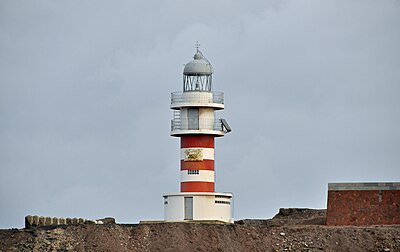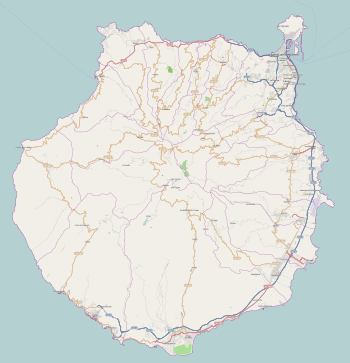 Overhead view of the lighthouse | |
 | |
| Location | Agüimes Gran Canaria Canary Islands Spain |
|---|---|
| Coordinates | 27°51′51″N15°23′05″W / 27.864080°N 15.384627°W |
| Tower | |
| Constructed | 1897 (first) ? (second) |
| Construction | masonry tower (current) stone tower (first) concrete tower (second) |
| Height | 14 metres (46 ft) (current) 6 metres (20 ft) (first) 9 metres (30 ft) (second) |
| Shape | cylindrical tower with double balcony and lantern (current) cylindrical tower attached to one-storey keeper's house (first) cylindrical tower with balcony attached to one end keeper's house (second) |
| Markings | tower with red and white bands, white balcony, glass lantern dome (current) |
| Operator | Autoridad Portuaria de Las Palmas de Gran Canaria |
| Light | |
| First lit | 1984 (current) |
| Deactivated | 1984 (second) |
| Focal height | 47 metres (154 ft) (current) |
| Range | 12 nautical miles (22 km; 14 mi) |
| Characteristic | Fl (3) WR 10s. |
| Spain no. | ES-12510 |
The Punta de Arinaga Lighthouse (Spanish : Faro de Punta de Arinaga) is an active lighthouse on the Spanish island of Gran Canaria in the Canary islands. The current lighthouse tower is the third to be constructed on the rocky headland of Punta Arinaga, near the town of the same name in the municipality of Agüimes. [1] Arinaga is on the south-east side of the island and marks the coastline between the Maspalomas lighthouse to the south and the Punta de Melenara lighthouse of Telde to the north. [1]



